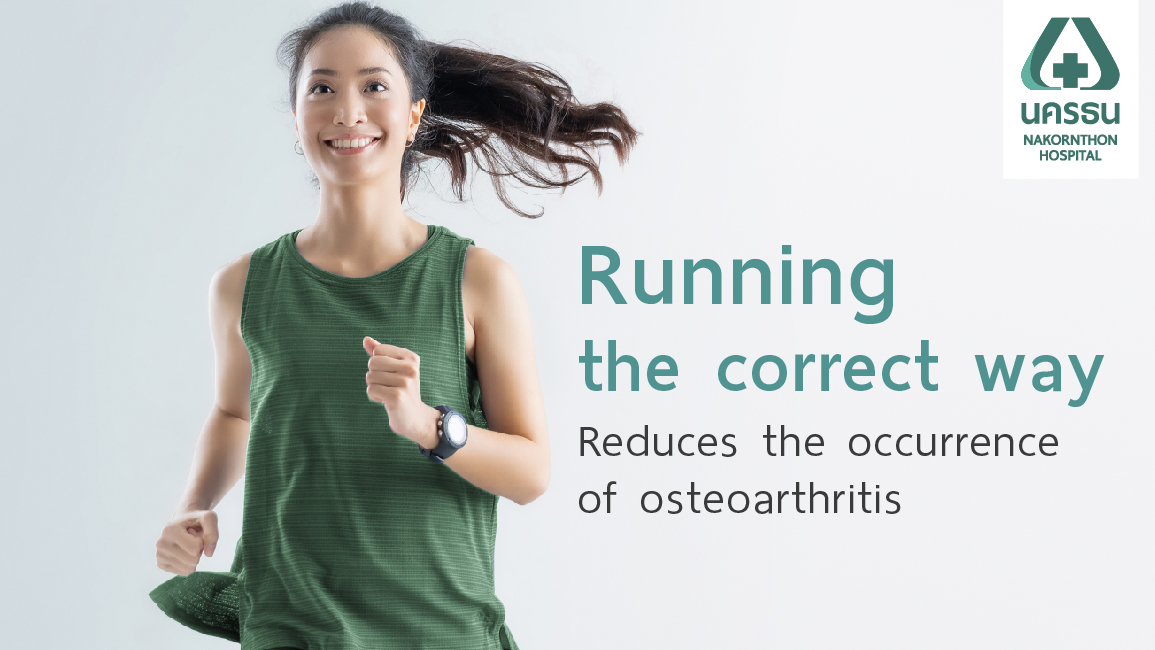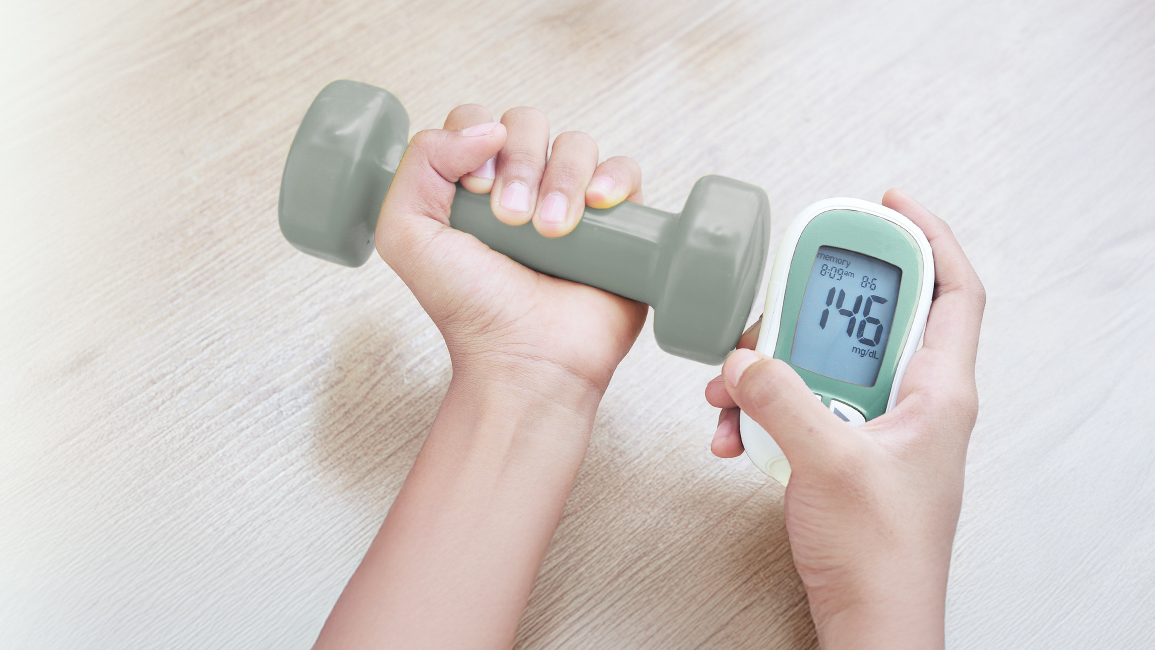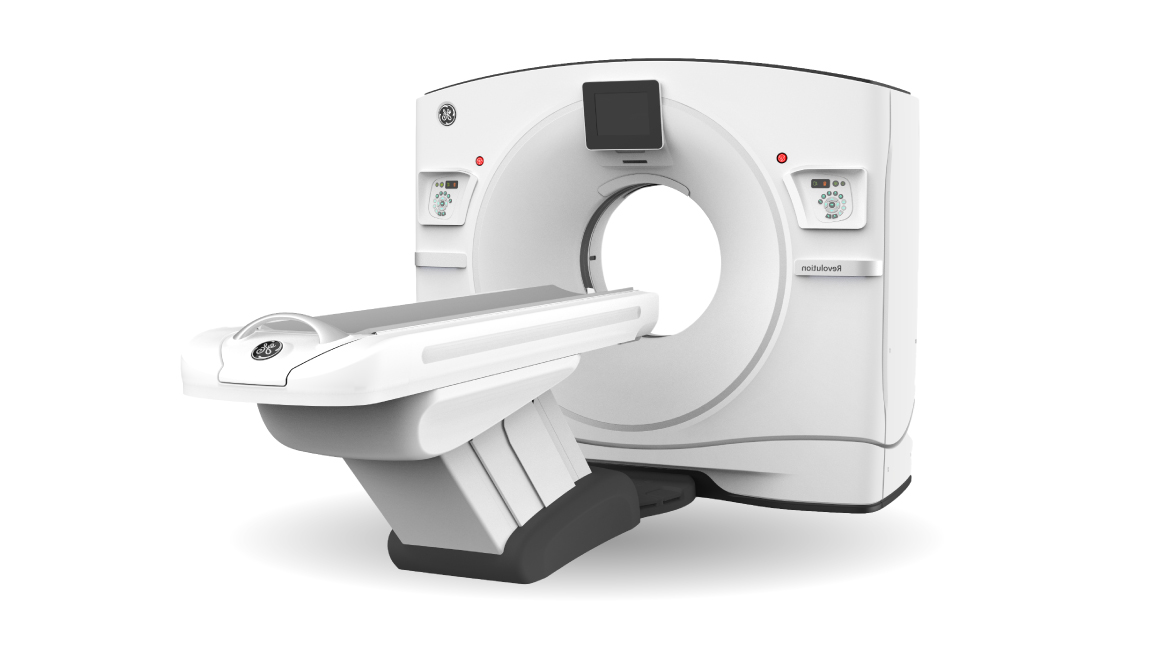Does jogging really cause "osteoarthritis"?
Center : Orthopedics Center
Article by : Dr. Nithiwut Pinsiranon

Beginner runners or anyone who wants to start an easy workout with running might worry that running causes osteoarthritis. Because running will bring your weight down to your legs and knees. Wherein if running incorrectly can cause knee pain and it also scares novice runners away from running for a long time. While others are saying that running can even reduce the symptoms of osteoarthritis of the knee. So how do we know that "If running good or harmful to the knees"? Find answers from your orthopedic specialist.
How are jogging and the knee connected?
Jogging requires the body to work together. Whether it is the spine, hip, knee, especially the ankles, and joints in the feet that have to do more than normal load or impact. So, it is not unusual when running, we tend to think of the knees and joints have been hit hard.
But, continuous running in the proper way, can help prevent joint deterioration. But when you suddenly stop running or lack exercise, it is more likely to be at risk for joint degeneration.
According to research by Eliza Chakravarty from Stanford University, a study of 45 runners compared with the 53 non-running groups for 18 years found that the rate of osteoarthritis among the runners found 20% less than the non-running group
In another study published in 2013 by Paul Williams, a group of 74,752 runners compared with 14,625 walking exercisers found that people who run about 2 kilometers a day have a higher rate of knee osteoarthritis. Including the opportunity to have a lower hip replacement, also, the number of people with problems from the group of runners was lower than those who exercised by walking. The researcher found that the causes associated with the occurrence of osteoarthritis are: Being overweight wherein the majority of runners have a lower body weight ratio. Therefore this problem is rarely encountered. As for runners who have other exercises, found that the incidence of osteoarthritis is higher.
How does running help reduce the incidence of osteoarthritis?
The reason that running reduces the incidence of osteoarthritis is that running each step has pressure on the articular cartilage The surface cartilage has properties like a sponge that supports the impact in the joint. The rhythmic press and release from the run increase the circulation of the fluid. Therefore, joint movements with appropriate pressure on the cartilage and regularly will stimulate the creation and repair of the wear. This helps reduce the risk of osteoarthritis.
However, after intense exercise, the body needs a recuperation period. In a week, some flexibility exercises should be performed. They alternate intermittently to allow the body to repair and create new tissues.
Advice for beginner runners
For beginner runners, it is recommended that you start by running for 10 minutes in a row, then gradually increase your time to 30 minutes for at least 5 weeks. Including choosing the right shoes. While running, put your weight on the heel, when approaching a stop, slow down and walk for a while. It will help reduce muscle pain after running the next day.
If you follow these instructions and your knee or other joint pain persists, see your orthopedic doctor. To find the root cause for appropriate treatment.
Consult Online
Article of Orthopedics Center
High-Speed CT scan 443 Slices: Precision, Speed, and Reduced Radiation Exposure






